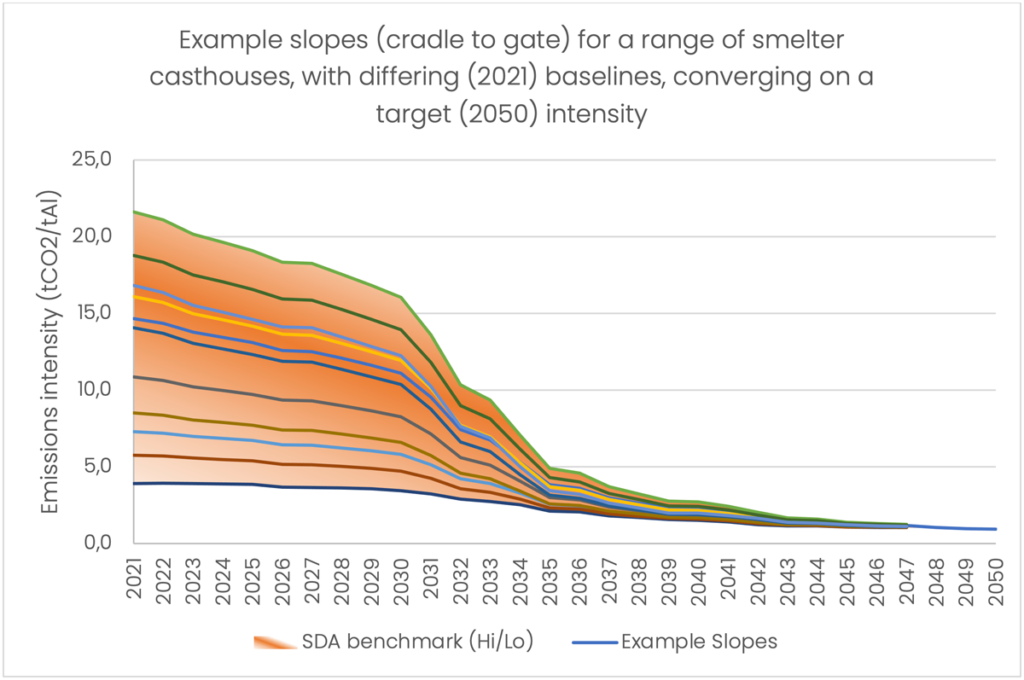Progress update: Development of a method for determination of 1.5 degree aligned GHG emissions pathways for ASI entities
The Working Group is on course to deliver a draft method to the ASI Standards Committee in September 2023, for review and decision on recommending it to the ASI Board for “ASI endorsement” in Q4.
11 August 2023
ASI Performance Standard v3 Criterion 5.3
The Entity shall:
- Establish a GHG Emissions Reduction Plan and ensure a GHG Emissions Reduction Pathway consistent with a 1.5oC warming scenario, using an ASI endorsed methodology when available.
- Ensure that the GHG Emissions Reduction Pathway includes an Intermediate Target covering a period no greater than five years, which:
- Addresses all Direct and Indirect GHG emissions.
- Is developed using a Science-Based Approach endorsed by ASI, if available.
- Is publicly disclosed.
- Review the GHG Emissions Reduction Plan annually.
- Review the GHG Emissions Pathway on any changes to the Business that alter baselines or targets.
- Publicly disclose:
- The latest version of the GHG Emissions Reduction Pathway.
- The latest version of the GHG Emissions Reduction Plan.
- Progress against the GHG Emissions Reduction Plan on an annual basis.
For the past six months the Climate Change Working Group has been developing a method that ASI Entities can use to define GHG Emissions Reduction Pathways, consistent with a 1.5oC warming scenario, for potential endorsement by the ASI Board in Q4 2023.
This method is required to demonstrate conformance with ASI Performance Standard v3 Criterion 5.3, to set emissions reduction targets and to disclose performance. No such method currently exists for all ASI certifying member classes and their supply chain activities.
Importantly the method should be:
- Applicable to and useable by ALL ASI Entities
- Science-based
- Addresses direct and indirect emissions, interpreted by the Climate Change Working Group as including Cradle-to-Gate emissions, broadly equivalent to scope 1, scope 2 and upstream scope 3 (categories, 1 ,3 and 4)
The Working Group is on course to deliver a draft method to the ASI Standards Committee in September 2023, for review and decision on recommending it to the ASI Board for “ASI endorsement” in Q4.
Even when approved, we can expect the method to evolve in the coming months and years as the science and underlying emissions data matures – in 2024, for instance, the Working Group will have a particular focus on land use change related emissions, which are poorly quantified for the sector, opportunities for methods focused on mining and refining and updates to sectoral slopes (a function of the fact that the 15 billion tonne CO2e emissions budget for the aluminium industry – from the International Energy Agency’s Net Zero Emissions Scenario – is being “used up” year on year)
Early decisions by the Working Group included a commitment to use and reference, where possible, existing (1.5 degree aligned) tools, approaches and data. These include, for the whole of global economy, the IEA Net Zero Emissions Scenario; for the global aluminium sector the International Aluminium Institute (IAI) 1.5 Degree Scenario and IAI/Mission Possible Partnership (MPP) scenarios for primary aluminium (cradle to gate) and recycling (gate to gate); and frameworks including the Center for Climate Aligned Finance, RMI Horizon Zero and Science Based Targets Initiative.
The Working Group also determined that the method should follow a “Sectoral Decarbonisation Approach (SDA)”, requiring convergence on a target emissions intensity (or intensities) by similarly scoped Entities with differing baseline emissions (taking care that no Entities describe Pathways that increase their emissions intensity).
The SDA requires:
- A reference sectoral slope (or slopes) that is generated from sectoral 1.5 degree emissions budget data (numerator) over the target period:
- Sectoral activity data –production or output tonnages (denominator).
Using these pieces of information, the Working Group now has methods applicable for primary aluminium and for semi-fabrication and fabrication processes.
Through the inputs of relatively few pieces of Entity specific data (aluminium products purchased, produced and sold, the emissions intensity of the Entity’s process(es) and the carbon footprint of inputs in a given baseline year) the method allows definition of an Entity-specific slope, against which it will need to demonstrate performance on or below the GHG intensity line to demonstrate conformance.

The Working Group is currently focusing on slopes for casthouses, a part of the value chain that is complicated by the fact that it combines both primary and recycled inputs.
A draft Microsoft Excel workbook allows Members to input their own Entity data in order to test the method – the latest draft is available from the Secretariat, so please get in touch if you would like to use this and to provide feedback on the draft method and the tool’s functionality. Contact Chris Bayliss for further information, to access the latest draft tool or to join the Climate Change Working Group.
RELATED TOPICS:
SHARE THIS ARTICLE


